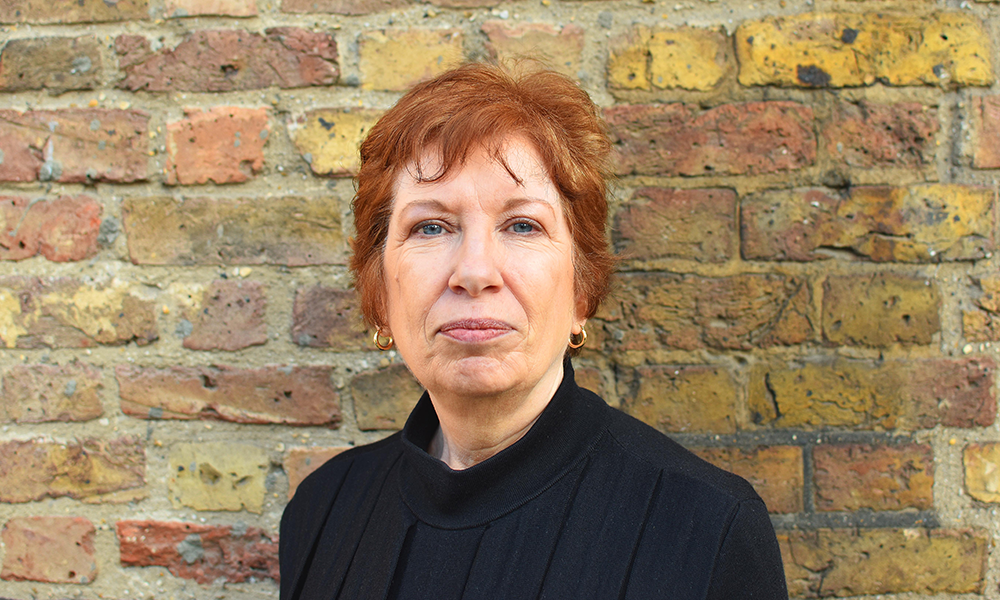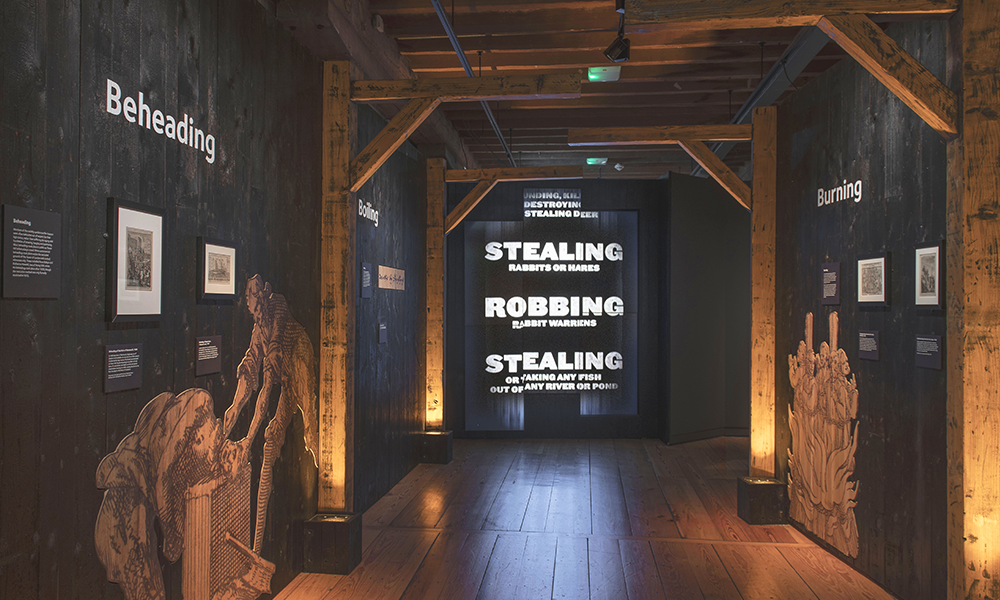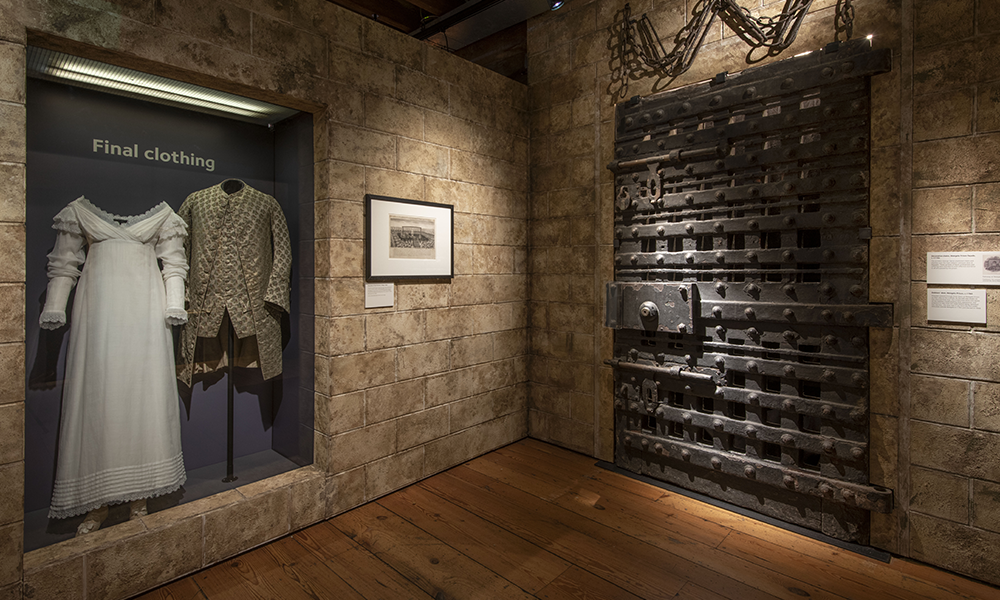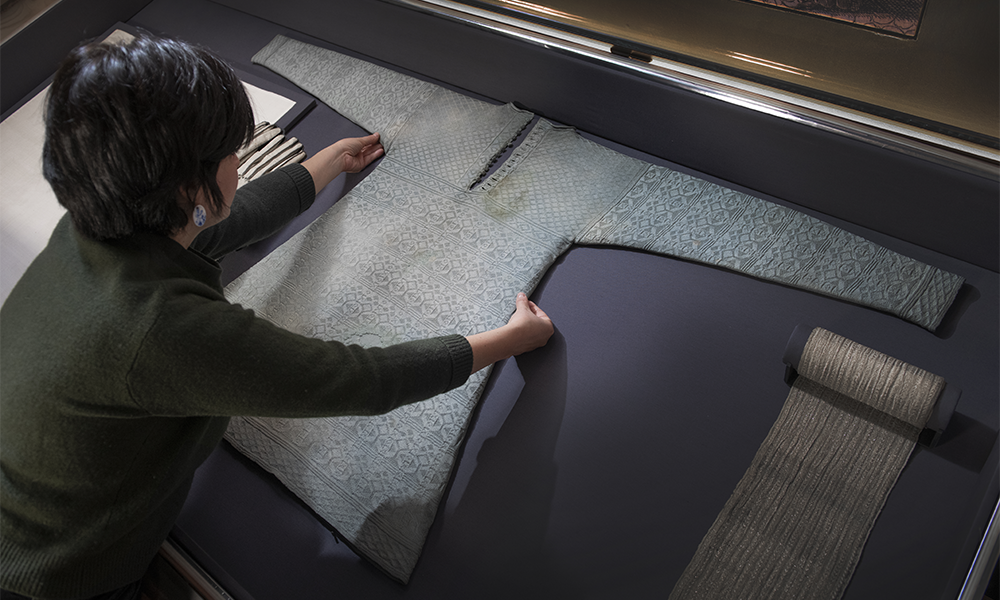West India Quay gallery hosts powerful and poignant exhibition covering 700 years of history

Subscribe to Wharf Life’s newsletter here
“Yes, nobody has ever committed a crime after being executed. 100% success rate,” said Lee Anderson, the Tory MP for Ashfield, in response to being asked whether he would support the return of the death penalty, during an interview with The Spectator.
The former Labour politician, who was recently appointed deputy chairman of the Conservative Party, had made the comments shortly before getting the job.
His apparent stance was subsequently disowned by current prime minister Rishi Sunak and his government.
However, it’s sobering to think such ideas continue to circulate in the upper echelons of public life.
After all, it’s a little over a decade since Priti Patel, then the relatively new Conservative MP for Witham, advocated for the return of the death penalty as “a deterrent” on BBC Question Time.
At the time, she seemed bemused at the idea that innocent people might inadvertently be put to death by the state following miscarriages of justice.
She went on to hold high office, including the position of home secretary under Boris Johnson.
It’s been nearly 59 years since the last hangings in the UK took place – incidentally three years before Lee, now 56, was born – although final abolition didn’t come until 1998 when the country signed up to the 13th Protocol of the European Convention On Human Rights.
This is all very interesting, but what have the extreme views of two Conservative politicians got to do with this part of east London?
Well, perhaps Lee, Priti and anyone else with an interest in formulating a view on state sanctioned killing would do well to pop over to the Museum Of London Docklands.
Its latest major exhibition Executions is in place at the former sugar warehouses on West India Quay until April 16 and acts as an in-depth examination of some 700 years of public capital punishment in London.
Granular, macabre and fascinating, it’s a potent, sensitive and poignant exploration of the extreme things humans find excuses to do to one another in the name of justice.
Its primary focus is on the first recorded and last public executions to take place in London between 1196 and 1868.

“We wanted to focus on where we had evidence,” said Beverley Cook, curator of social and working history at the Museum Of London.
“The first was recorded at Tyburn, which became the main site for public executions in the city until it closed in 1783 and then moved to Newgate Prison.
“The exhibition is quite traditional in that it relies very heavily on material and visual culture, which we have interpreted to tell the wider story.
“Where we don’t have objects, we’ve used some audio-visual elements to present content with a design that’s very strong and atmospheric to tackle a potentially challenging subject and deal sensitively with the difficulties of bringing that to an audience of the general public.”
Executions examines the mechanics and practicalities of the killings – what methods were used to end the lives of the condemned and where these acts took place.
Over the course of the 700 years people were hung, drawn and quartered, burnt alive, hanged and beheaded – the latter being a fate mainly for convicted members of the nobility.
Two poisoners (one a chef) were even boiled to death in separate incidents.
“In the earlier period, with governments and the monarchy being more unstable, you find more people being executed for things like treason, rioting, rebellion and of course heresy,” said Beverley.
“When you move to the 18th century, you start to see it becoming more urbanised, with more emphasis on property – governments are more stable, so you start to see more people being executed for crimes that we might be more familiar with today, such as crimes against the person or against property.
“There was this bizarre thing called the Bloody Code where every sort of offence mainly against property was added to the statute book.

“That meant that there were more than 200 crimes – many similar to one another – where people could in theory be condemned to death, as that was one of the only forms of punishment at the time.
“There are some very strange ones, such as impersonating a Greenwich Pensioner – presumably to get certain privileges – which was a capital offence. We don’t know whether anyone was actually executed for it.”
While my assumption before visiting the exhibition was that people would primarily be killed for committing serious crimes of violence, it turns out many were put to death for relatively minor offences.
Coin clipping – slicing silver off the edges of coins to be melted down and sold – one of the main forms of fraud in the Mediaeval period did, however, see offenders put to death.
“We know this was a crime that Jewish people were often executed for,” said Beverley.
“This was part of the discrimination against the Jewish community at the time, and in the exhibition we show how they were more likely to be executed for this than members of the Christian community – even though there were probably more Christians committing that crime.
“Between 1278 and 1279, 600 members of the Jewish community from across the country were sent to the Tower Of London and 279 were hanged at Tower Hill.
“That’s in contrast to 29 Christians.”
The exhibition only sets out to deal with executions carried out in public to examine their impact on Londoners’ lives.
“In the centre of the capital, you’re never more than five kilometres from a site of public execution,” said Beverley.
“Although people think of Tyburn, Newgate and maybe Smithfield, there were multiple execution sites throughout London.
“The reason for that was partly because people were often executed close to the site of their crime.
“It was seen as important to have visible justice in a local area, so people couldn’t ignore the fact that this was the punishment for a particular crime.

“For very serious or high profile crimes people were often brought to London for execution – such as William Wallace who was hung drawn and quartered at Smithfield – and over time you get the press, printers and publishers all focused on London.
“Like today, if something happened in the capital, word spread very quickly.”
A substantial chunk of the exhibition is given over to telling the stories of the condemned.
Dressed to represent a cell at Newgate Prison, where those sentenced to death at the Old Bailey would have been held ahead of their execution, it tells the stories of those pleading for mercy and final letters from the prisoners – some saying farewells and others maintaining their innocence.
“When Newgate was demolished in 1902, the museum acquired some of the relics such as the bolt from a condemned cell,” which we’re able to display,” said Beverley.
“Those convicted at the Old Bailey next door might have been held for a few days or a few months but everyone had the right to petition for mercy – not exoneration but to commute the death sentence to imprisonment.
“We have petitions on display from the national archive including one from a man named Joseph who argues he was led astray by a gang of youths who got him drunk before he stole from someone.
“His mother signed his petition with a cross because she was illiterate.
“People would try to get as many signatures as possible but Joseph didn’t have many supporters so his petition failed.
“He was described as ‘dreadfully distressed’ at the time of his execution. It’s quite shocking. He was only 18.”
The exhibition includes the door from Newgate through which prisoners passed on their final journey.
It’s a solid, iron-bound touchstone linking all who visit to those put to death.
Executions also looks at how public killings were received, publicised and attended – including a mock up of the three-cornered gallows at Tyburn.
“We have a representation of the procession from Newgate to Tyburn, which was a few miles, and the crowd would line the streets,” said Beverley.
“The prisoners were taken in carts, and in the cart was the coffin they would be put in – their arms would be pinioned so they would be allowed to pray, but that was all.
“The nooses were put around their necks while they were in the cart, the horses would be driven away and that’s how they were executed.
“There was no science behind it – there are accounts of people taking half an hour to die.
“One story we highlight is about a man called John Smith, who had the noose around his neck.
“The horse was driven away and he was reprieved suddenly, so he was cut down and revived.
“People were then asking him what he’d seen close to death, because they were very religious at that time.”
Such sudden changes to the expected outcome could be problematic as printed accounts of executions were big business and widely sold – often before the killing had actually taken place.
The exhibition includes many examples – telling the stories of crime and death in lurid detail – including one of a man who was never actually killed despite the description of his execution.
He actually wound up being transported to Australia instead – an example of fake news.
In contrast there are the forensically accurate sketches of the dead – complete with rope marks on the neck – from the Royal College Of Surgeons where bodies were often sent for dissection.
This constituted an extra punishment as it was thought the process would prevent resurrection in the afterlife.
Perhaps the most powerful part of the exhibition is a simple scrolling list of those executed – their names, the date of their death, their age and their crime.
There are 16 and 17-year-olds featured. Many were executed for crimes such as theft, burglary and fraud.
It’s impossible to do full justice to the rich and deep vein of tragic stories that Executions brings together in a single article.
While the exhibition offers no overt comment on the death penalty, it is chilling to think many of those put to death over 700 years were doubtless innocent of their often minor offences.
We must never repeat that crime

ROYAL REMINDER – Possibly the vest of King Charles I
One of the key exhibits at Executions is a sweat-stained knitted silk vest, reportedly worn by King Charles I at his beheading.
“This would have been worn under his shirt, which would have been plain white according to illustrations of the scene,” said Beverley.
“We know it was a bitterly cold day, 30 January 1649, when he was executed in front of Banqueting House, and he did ask for a second vest, because he didn’t want the crowd to think that he was shivering from fear.
“It is an amazing story and we have done some analysis on the stains. We believe that they are bodily fluids, but we can’t prove that they have been there since 1649.
“At the time it came into the Museum Of London’s collection with this story attached, there was no reason to disbelieve the claim, although now as curators we are rather more cautious in our approach.
“What we do know is that it is correct for the period – it’s fine knitted silk, which wouldn’t have been generally worn by the public.
“It’s an amazing story and we have been doing further tests to uncover more evidence.”
King Charles I was executed for treason in front of a large crowd at the culmination of the English Civil War.
In line with custom, the identity of his executioner was never revealed to the public.
- Executions runs at the Museum Of London Docklands until April 16, 2023. Standard tickets start at £12. Wharf Life readers can get 25% off adult ticket prices when visiting before April 1, 2023, by using promo code Wharf25.
- Terms and conditions apply. The offer is only valid on visits on or up to March 31, 2023. Only adult tickets are covered and the discount will be applied during the checkout process. The offer applies to max four reduced tickets per customer and there is no cash or credit alternative.
Tickets for the exhibition can be booked via this link
Read more: How The Ignition Platform is bringing dance to the Isle Of Dogs
Read Wharf Life’s e-edition here
Subscribe to Wharf Life’s newsletter here
- Jon Massey is co-founder and editorial director of Wharf Life and writes about a wide range of subjects in Canary Wharf, Docklands and east London - contact via jon.massey@wharf-life.com



